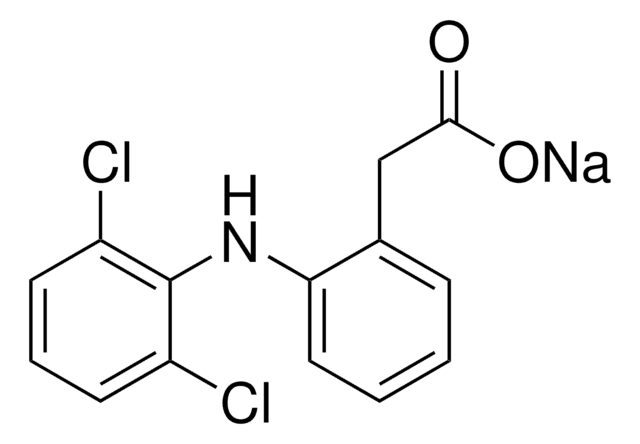Y0000167
Álcool benzílico
European Pharmacopoeia (EP) Reference Standard
Sinônimo(s):
Benzeno-metanol
About This Item
Produtos recomendados
grau
pharmaceutical primary standard
Agency
EP Reference Standard
densidade de vapor
3.7 (vs air)
pressão de vapor
13.3 mmHg ( 100 °C)
3.75 mmHg ( 77 °C)
família API
benzalkonium chloride
temperatura de autoignição
817 °F
fabricante/nome comercial
EDQM
índice de refração
n20/D 1.539 (lit.)
p.e.
203-205 °C (lit.)
pf
−16-−13 °C (lit.)
densidade
1.045 g/mL at 25 °C (lit.)
aplicação(ões)
pharmaceutical (small molecule)
Formato
neat
temperatura de armazenamento
2-8°C
cadeia de caracteres SMILES
OCc1ccccc1
InChI
1S/C7H8O/c8-6-7-4-2-1-3-5-7/h1-5,8H,6H2
chave InChI
WVDDGKGOMKODPV-UHFFFAOYSA-N
Procurando produtos similares? Visita Guia de comparação de produtos
Categorias relacionadas
Descrição geral
Aplicação
Embalagem
Outras notas
produto relacionado
Palavra indicadora
Warning
Frases de perigo
Declarações de precaução
Classificações de perigo
Acute Tox. 4 Inhalation - Acute Tox. 4 Oral - Eye Irrit. 2
Código de classe de armazenamento
10 - Combustible liquids
Classe de risco de água (WGK)
WGK 1
Ponto de fulgor (°F)
213.8 °F - DIN 51758
Ponto de fulgor (°C)
101 °C - DIN 51758
Escolha uma das versões mais recentes:
Certificados de análise (COA)
It looks like we've run into a problem, but you can still download Certificates of Analysis from our Documentos section.
Se precisar de ajuda, entre em contato Atendimento ao cliente
Já possui este produto?
Encontre a documentação dos produtos que você adquiriu recentemente na biblioteca de documentos.
Os clientes também visualizaram
Nossa equipe de cientistas tem experiência em todas as áreas de pesquisa, incluindo Life Sciences, ciência de materiais, síntese química, cromatografia, química analítica e muitas outras.
Entre em contato com a assistência técnica







